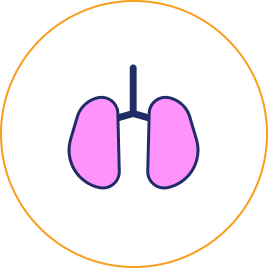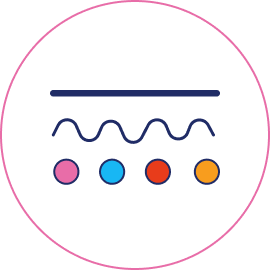NEXT UP
Hypoallergenic formula-feeding in CMPA
Importance of continuing to breastfeed in infants with CMPA.
Breastmilk contains a diverse range of bioactive components including, immunoglobulins, hormones, and oligosaccharides or human milk oligosaccharides (HMO) (Wiciński et al 2020).
Newborns therefore obtain maternal immune support through factors in breastmilk, including HMO, secretory immunoglobulin A (IgA), lactoferrin, antimicrobial peptides (AMPs) and others (Field CJ, et al. J Nutr. 2005. Cederlund A, et al. PLoS One. 2013).
Breastmilk therefore provides the ideal balance of nutrients for the infant, including those with CMPA.
| Human Breastmilk |
|---|
| Macronutrients, Micronutrients, and HMO |
| Water |
| Solid Components |
|---|
| Proteins (about 8 g/l) |
| HMO (5-15 g/L) |
| Lactose (about 70 g/L) |
| Lipids (about 40 g/L) |
| HMO |
|---|
| ... |
| Sialyllacto-N-tetraose |
| 3’ -and 6’- Sialyllactose |
| 3’ - Fucosyllactose |
| LNT & LNnt |
| Lacto-B-fucopentaose |
| 2’FL |
HMO are the third most abundant solid component of breastmilk (Figure 2.) and play an especially important role in nurturing the growing immune systems (Zivkovic A, et al. PNAS. 2011).
There are over 200 of these structurally complex carbohydrates known today, two of them – 2’ Fucosyllactose (2’FL) and Lacto-N-(neo_tetraose (LNnT) - account for more than 30% of HMO in breastmilk (Vandenplas Y et al. Nutrients. 2018).
In rare cases when CMPA is suspected in an exclusively breastfed infant, a diagnostic maternal exclusion of cow’s milk/dairy-free for 2-4 weeks is recommended whilst continuing to breastfeed (Vandenplas et al., ESPGHAN CMPA guidelines 2022 – under review). Following this exclusion period, in order to confirm the diagnosis, cow’s milk/dairy should be reintroduced back into the maternal diet while monitoring of infant’s symptoms.
During the maternal exclusion the mother is advised to eliminate all sources of cow’s milk/dairy from her diet as well as that of her baby (if complementary feeding has started). Guidelines recommend that professional dietary counselling during the exclusion period to ensure the quality of the mother’s diet, as well as follow-up to ensure that the exclusion of foods does not continue if not effective (Januszko P, et al 2020).
In case of a prolonged maternal elimination diet then supplementation with calcium and vitamin D is recommended – up to 1000 mg of calcium and 10 micrograms of vitamin D/day (Ludman S, et al. BMJ. 2013). In addition, supplementation with iodine and vitamin B12 can be considered (Vandenplas et al., et al., ESPGHAN CMPA guidelines 2022 – under review).
For infants, including a reduced incidence of:

Gastroenteritis and diarrhea

Respiratory tract infections

Atopic manifestations